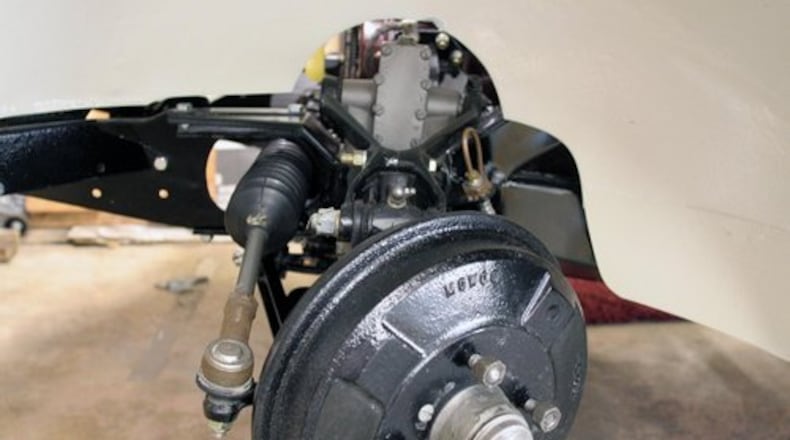How is brake life supposed to be determined if we all drive in different driving conditions? What should the life expectancy of my brake pads and rotors be?
I’m concerned that dealers, with so few cars on their lots to sell these days, are pushing “repairs” to increase profits, and I’m not savvy enough to know whether to believe them when they say I need brakes. -- Larry.
RAY: It’s likely you need brakes, Larry.
Brake life is based entirely on usage. The more you use the brakes, and the harder you use the brakes, the shorter their life.
Most cars, under a normal mix of highway and city driving, will go through a set of brakes every 30,000 miles or so.
But that’s an average. If you drive like a New York City cabby, you might need brakes every 15,000 miles. If you do all your driving on the highway, and gently coast to a stop on off-ramps, you could get 90,000 miles out of a set of brakes.
So, based on your mileage alone, you should be close to needing new pads and rotors if you don’t need them already. But you don’t have to guess based on mileage, Larry. There are objective ways to measure brake life.
There is a gauge that measures the thickness of your remaining brake pads. And generally speaking, if they’re down to an eighth of an inch of pad left, it’s time to replace them. And when the pads get replaced, the rotors should be replaced, too. Since you can’t measure them yourself, you’re going to have to trust a mechanic.
If you really believe the dealer is trying to push unnecessary repairs because he doesn’t have enough cars to sell, you can always go to a shop that doesn’t sell cars and get a second opinion.
But by any measure, you’ve done well to get 74,000 miles out of a set of brakes. So, even if you don’t need new ones right now, it’s not too early to start shopping around for a set of brake pads in a color you like.
No clear connection between soy-coated wiring and rodents
Dear Car Talk:
Our daughter recently bought a used Toyota Highlander. Not one week after she took it home, the engine light came on. She drove back to the dealer and was told that critters had eaten the cover off some wires.
I’ve read that this has become a common problem not only for Toyota, but also for other car manufacturers, because they were covering the wires with a soy coating and animals like the taste. Is this true? If it is true, why are they doing it?
Now our daughter has to spray a peppermint mixture around her car every night to keep the mice, etc., away. Kinda goofy, don’t you think? -- Dewey
RAY: Well, on the positive side, she probably has the best-smelling garage in the county. If the peppermint spray works, that’s great. But she might also want to consider getting a cat to live in the garage and name it Peppermint. That might work better.
We don’t know if this is true, Dewey. We do believe that manufacturers, in an attempt to use fewer plastic and petroleum products, started using some soy content as a petroleum replacement -- particularly in wiring insulation. What we don’t know is if that attracts rodents or not.
Toyota denies the whole thing. They say that rodents damage all cars and all types of wires, and that they’re “not aware of any scientific evidence that demonstrates rodents are attracted to automotive wiring because of alleged soy-based content.” You can tell that was written by their lawyer because even the use of soy is “alleged.”
Anyway, a bunch of Toyota owners didn’t believe them. So, they filed a class-action suit, claiming Toyota is responsible for the cost of fixing their rodent damage. And in 2018, a judge dismissed the suit, pointing out that the rodents in question ate some stuff that was soy based and some stuff that wasn’t soy based. According to the judge, they were just hungry, I guess.
So, while this is a plausible-sounding theory and may prove to be correct someday, we haven’t seen any evidence we can cite that blames soy content in wires.
What we can blame is rodents. We know they like warm places to make nests, like engine compartments. And we know they like to gnaw on stuff, because their teeth are always growing.
So my advice to your daughter would be to call in a rodent-control person. There are professionals who specialize in making places as inhospitable to rodents as possible. And that’s what you want, because -- as your daughter found out -- small rodents can create large repair bills.
Got a question about cars? Write to Ray in care of King Features, 628 Virginia Drive, Orlando, FL 32803, or email by visiting the Car Talk website at www.cartalk.com.
About the Author

